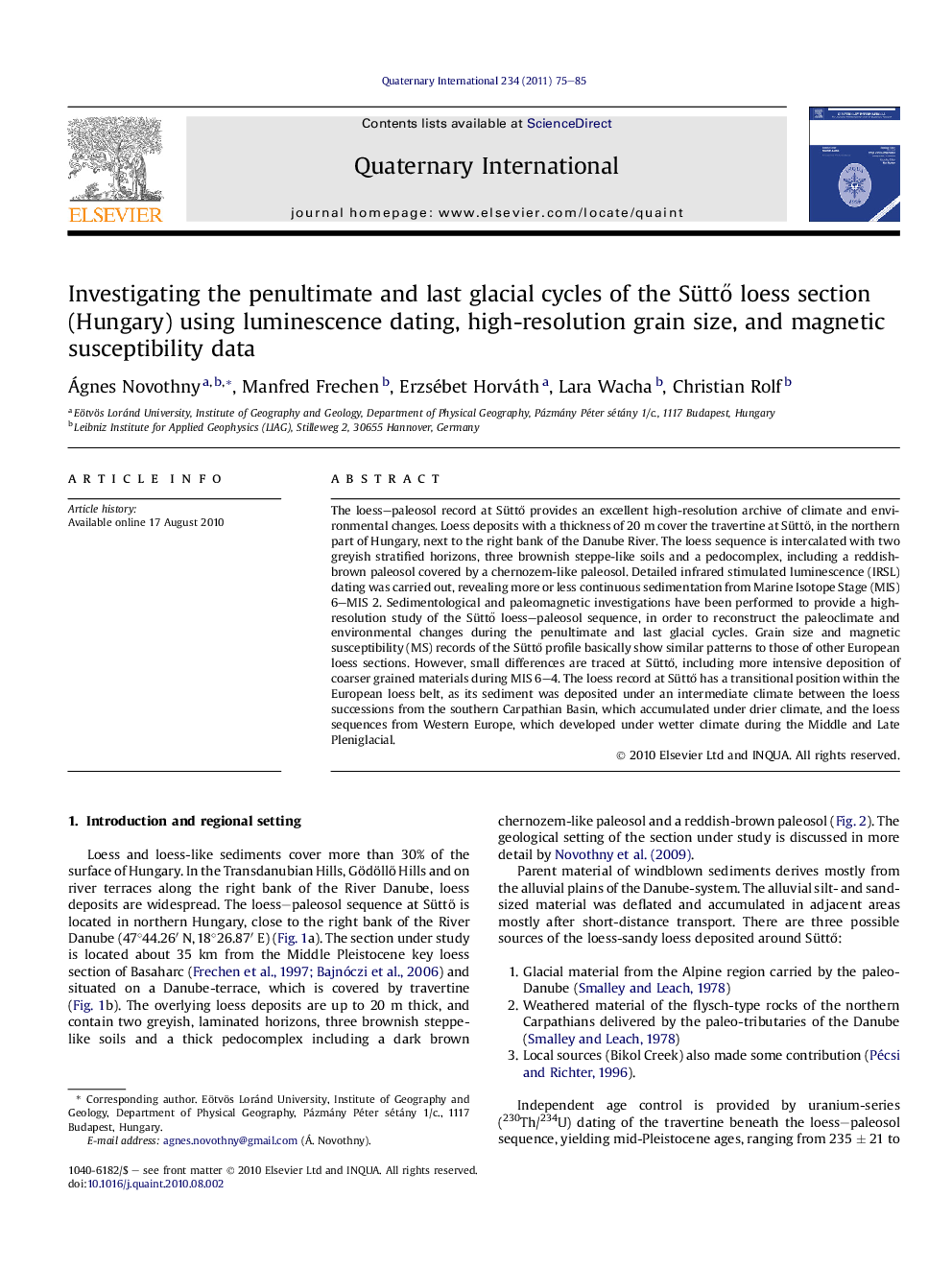| کد مقاله | کد نشریه | سال انتشار | مقاله انگلیسی | نسخه تمام متن |
|---|---|---|---|---|
| 1043448 | 1484247 | 2011 | 11 صفحه PDF | دانلود رایگان |

The loess–paleosol record at Süttő provides an excellent high-resolution archive of climate and environmental changes. Loess deposits with a thickness of 20 m cover the travertine at Süttő, in the northern part of Hungary, next to the right bank of the Danube River. The loess sequence is intercalated with two greyish stratified horizons, three brownish steppe-like soils and a pedocomplex, including a reddish-brown paleosol covered by a chernozem-like paleosol. Detailed infrared stimulated luminescence (IRSL) dating was carried out, revealing more or less continuous sedimentation from Marine Isotope Stage (MIS) 6–MIS 2. Sedimentological and paleomagnetic investigations have been performed to provide a high-resolution study of the Süttő loess–paleosol sequence, in order to reconstruct the paleoclimate and environmental changes during the penultimate and last glacial cycles. Grain size and magnetic susceptibility (MS) records of the Süttő profile basically show similar patterns to those of other European loess sections. However, small differences are traced at Süttő, including more intensive deposition of coarser grained materials during MIS 6–4. The loess record at Süttő has a transitional position within the European loess belt, as its sediment was deposited under an intermediate climate between the loess successions from the southern Carpathian Basin, which accumulated under drier climate, and the loess sequences from Western Europe, which developed under wetter climate during the Middle and Late Pleniglacial.
Journal: Quaternary International - Volume 234, Issues 1–2, 1 April 2011, Pages 75–85